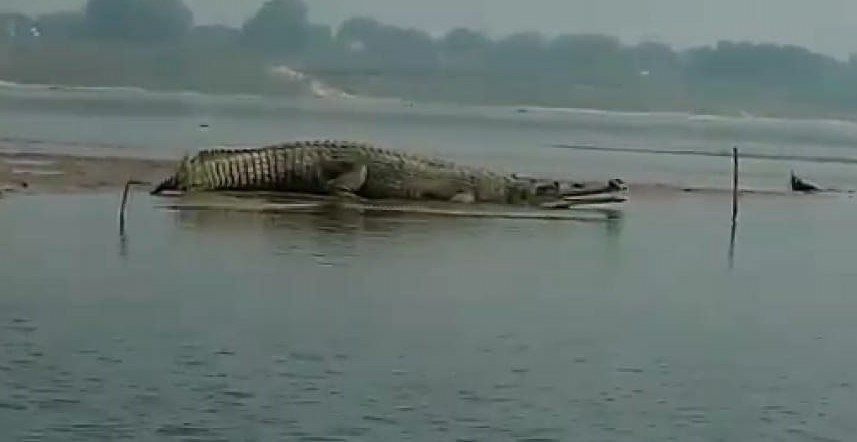
#Breaking An adult Gharial spotted today in Mirzapur (U.P.) stretch of River Ganga somewhere between Shastri Pul & Vindhyachal.
— Vindhyan Ecology & Natural History Foundation (@vindhyabachao) February 29, 2020
Video source- local journalists.@rameshpandeyifs @wti_org_india @SanctuaryAsia @UpforestUp @MadrasCrocBank @journomayank @Indian_Rivers @yamunajiye pic.twitter.com/EvL6SaPYhK
Fact Sheet:
Common Name: Gharial, Fish-eating Crocodile, Indian Gavial, Indian Gharial, Long-nosed Crocodile
Scientific Name: Gavialis gangeticus; Synonym: Lacerta gangetica
Scientific Name: Gavialis gangeticus; Synonym: Lacerta gangetica
Length: 3-6 meter (Male), 2.5-4 meter (Female)
Weight: 150-250 Kg
Number of Mature Individuals: 300-900, 650 (IUCN, 30 December 2017)
Weight: 150-250 Kg
Number of Mature Individuals: 300-900, 650 (IUCN, 30 December 2017)
Status: Listed in Schedule I of Wildlife (Protection) Act, 1972 and as Critically Endangered on IUCN Red List

Gharial has been a native species of Bangladesh, India, Nepal where it is still resident and has become extinct from Bhutan, Myanmar and Pakistan. In India, the gharial population is found within the tributaries of the Ganges river system. The population of Gharial is severely fragmented and is at high risk from various anthropogenic activities.
Gharial has long thin jaws to catch fish. Gharial has got its name because of a large, bulbous growth, known as a ‘ghara’, on the tip of male's snout.
Gharial has long thin jaws to catch fish. Gharial has got its name because of a large, bulbous growth, known as a ‘ghara’, on the tip of male's snout.
Source:
https://www.iucnredlist.org/species/8966/149227430
https://www.wwfindia.org/about_wwf/priority_species/threatened_species/gharial/
https://www.iucnredlist.org/species/8966/149227430
https://www.wwfindia.org/about_wwf/priority_species/threatened_species/gharial/

